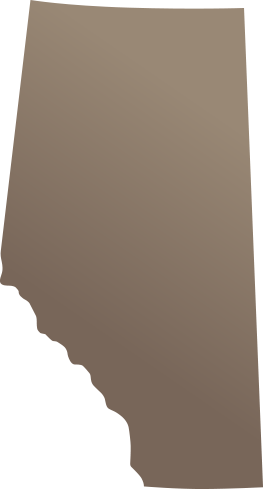Culture and Language
Develop an understanding of the importance of preserving languages and cultures.
To begin, select a category from the menu.
In this activity, you will discover that some Alberta place names have roots in First Nation or Métis languages. These names often convey how the visually and experientially based Indigenous languages describe the land and provide a historical understanding of the people and their culture in that area.
Michelle is teaching a Grade 4 Social Studies class about the history of the city of Edmonton.

The class discussion turns to Fort Edmonton, which the Cree called Amiskwaciy Wâskahikan (Beaver Hill House). This name came as a result of the fort’s location on a hill and its use for trading beaver pelts and other furs. As a result of this discussion, the students are curious about the origin of names of other places in Alberta. Michelle has established many relationships within the local First Nations, Métis and Inuit communities. When she consults with her contacts, she discovers that many geographic locations and place names in Alberta have their origin in First Nation languages.
What do you think these place names mean in their original First Nations languages?
(Choose a location to learn more.)
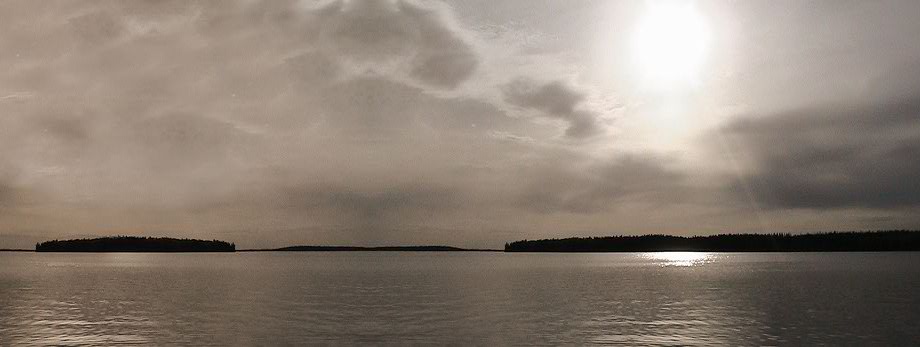
English Name: Bistcho Lake
Dené Tha’ name: mbehcho
Language of origin: Dene
Explanation: The name Bistcho means “deep sleep” in reference to the lake’s depth and a Dené Tha’ story about the sleeping giant who formed the deep cavity of the lake.
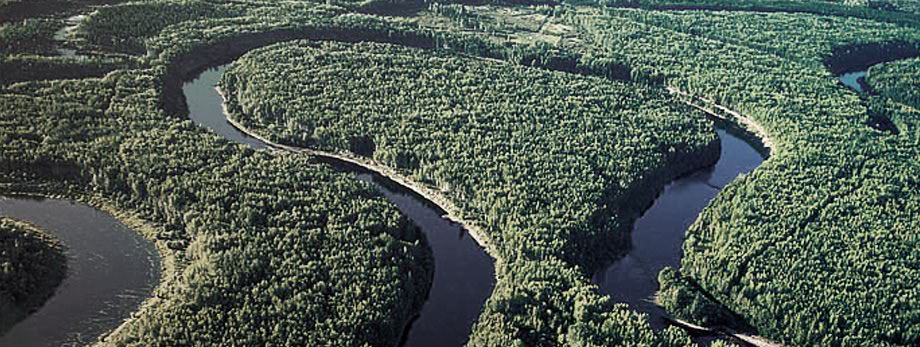
English Name: Chinchaga River
Dené Tha’ name: echinchageh
Language of origin: Dene
Explanation: The name Chinchaga means “sharp edge with steep banks” in the Dene language.
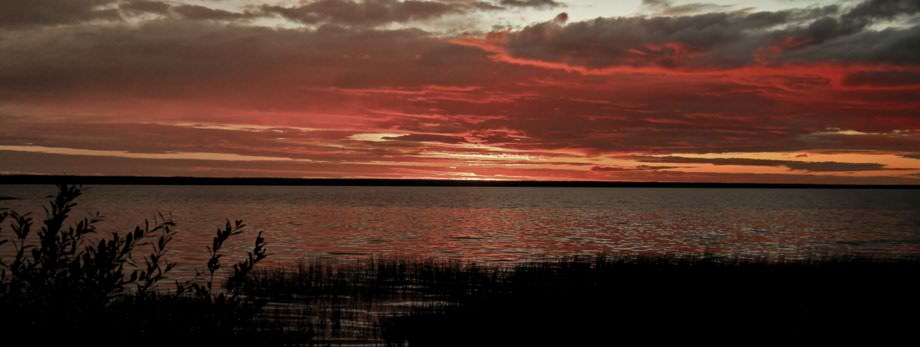
English Name: Wabasca
Cree name: wâpaskâw
Language of origin: Cree
Explanation: The name of this small river, the lakes and the community comes from the Cree word for “grassy narrows,” referring to the grassy narrows between and along the South and North Wabasca Lakes.
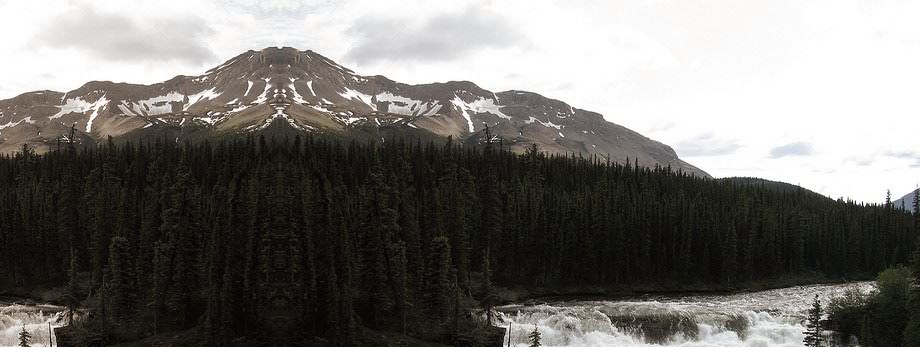
English Name: Wapiti River
Cree name: wâpitî sîpî
Language of origin: Shawnee
Explanation: The Wapiti River is named after the Shawnee word for “elk,” which is “wâpitî.” Because Shawnee and Cree have a common linguistic background and the “wap” root in Cree means “white,” referring to the pale rump and tail of the elk, the Shawnee version of the word is used by Cree speakers. In the Cree language, the word for elk is “wâwâskesiw,” referring to its rounded back or bent-over appearance.
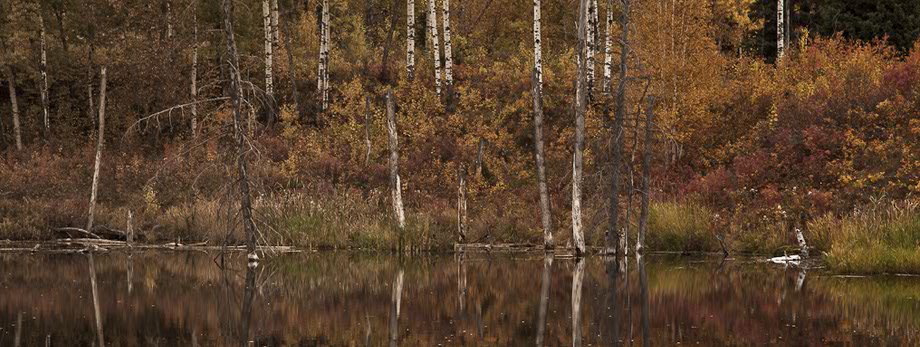
English Name: Wabamun
Cree name: wâpamon
Language of origin: Cree
Explanation: “Wâpamon” is a Cree word meaning “clear reflection,” suggesting clarity from a balanced life. Traditionally, “wâpamon” refers to sacred waters and to the importance of balance between the spiritual and earthly realms.
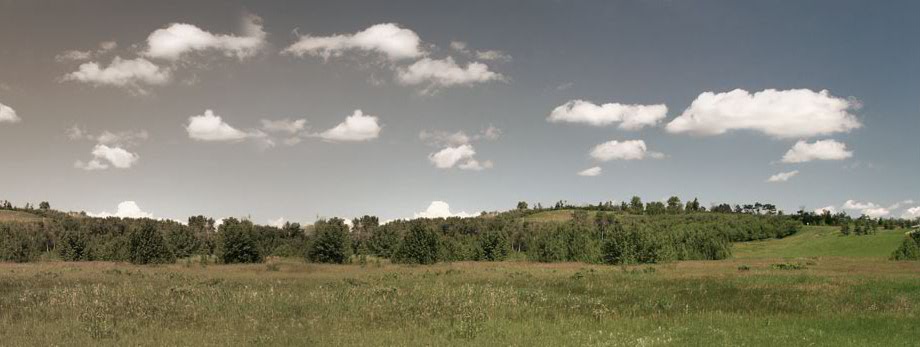
English Name: Wetaskiwin
Cree name: wîtaskîwin
Language of origin: Cree
Explanation: “Wetaskiwin” is derived from the Cree word for “place of peace” or “hill of peace.” It describes the hill where the Blackfoot and the Cree smoked the peace pipe and ended a long-standing state of war between the tribes.
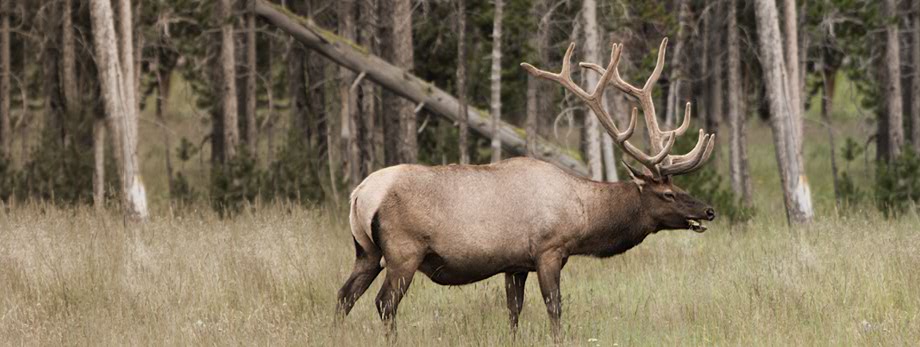
English Name: Ponoka
Blackfoot name: ponoka
Language of origin: Blackfoot
Explanation: Ponoka means “elk” in Blackfoot. According to a local story, a railway employee scrawled the word “ponoka” on the railroad siding sign, perhaps because the animals were seen at this location, and the name stuck. Today the town flag depicts an elk.
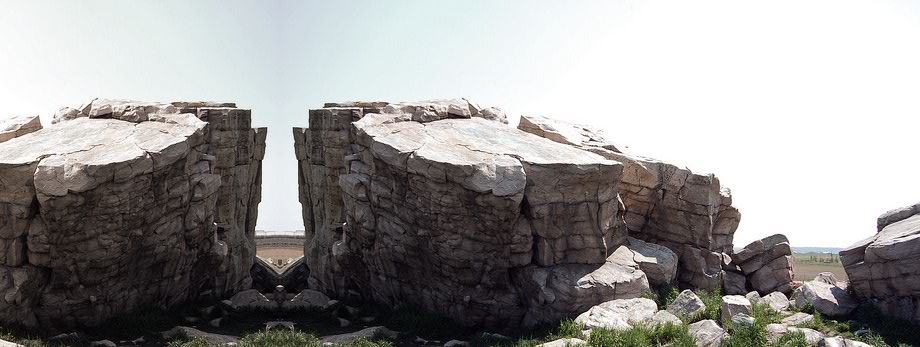
English Name: Okotoks
Blackfoot name: ohkotokiksi
Language of origin: Blackfoot
Explanation: Okotoks is derived from a Blackfoot word meaning “rock.” This reference is to the world’s largest known glacial erratic, found just west of the town of Okotoks.
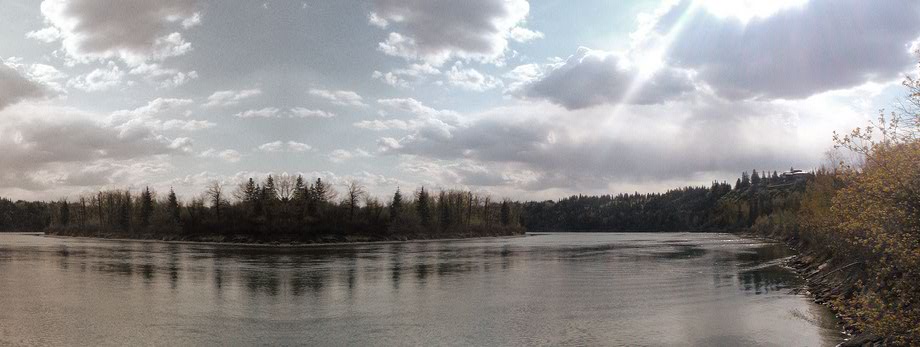
English Name: Saskatchewan River (South)
Cree name: kisaskacewan sîpî
Language of origin: Cree
Explanation: Originating in the Rocky Mountains and flowing all the way to Lake Winnipeg, the Saskatchewan River is the fourth longest river system in Canada, draining most of southern Alberta and Saskatchewan. It takes its name from the Cree word meaning “swift flowing river.” The north and south branches of the river and their tributaries were part of an important transportation route for First Nations and Métis Peoples.
Reflection Statement
Language carries culture from the past, into the present and on to the future. In Indigenous worldviews, language and culture are interwoven with the Indigenous Peoples’ connection to the land. In Alberta, this relationship can be shown in descriptive place names linked to First Nations language, history and events.One of the challenges facing First Nations, Métis and Inuit today is the declining use and potential loss of their Indigenous languages.
How can your classroom practices show respect and appreciation for the original languages of the First Nations, Métis and Inuit?
Kathy Yellowhorne-Breaker speaks about the positive results from integrating language and culture.
The speakers in these interviews acknowledge the benefits and stress the importance of teaching Aboriginal cultures and languages in the classroom.
Select a video.
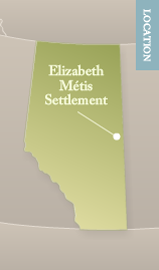
Mary Wells | Métis | Elizabeth Métis Settlement
Mary Wells talks about teaching Cree by translating songs into Cree and by using Métis dancing.
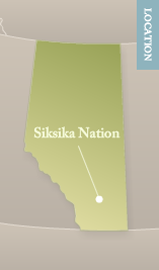
Kathy Yellowhorne-Breaker | Siksika | Siksika Nation
Kathy Yellowhorne-Breaker, Siksika educator, talks about how language and culture have been incorporated into education and how participation of Elders is beneficial for students.
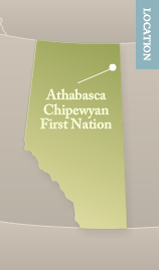
Janette Flette-Jones | Dene Suliné | Athabasca Chipewyan First Nation
Janette Flett-Jones, Dene Suliné, believes it is her responsibility to teach the language for the benefit of future generations.
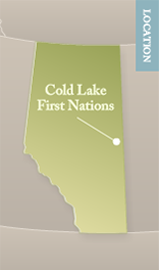
Shirley Cardinal | Dene Suliné | Cold Lake First Nation
Shirley Cardinal talks about how her Dene Suliné language is part of her identity.
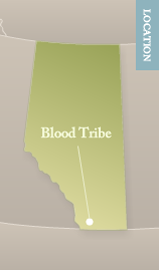
Wilton Goodstriker | Kainai | Blood Tribe
Elder Wilton Goodstriker, Kainai First Nation, talks about how the Blackfoot language connects people to their culture and builds healthy self-esteem.
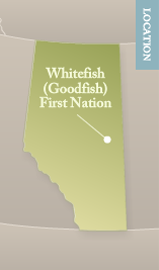
Wayne Jackson | Plains Cree | Whitefish (Goodfish) First Nation
As co-chair of a Curriculum First Nations, Métis and Inuit Advisory Committee meeting, Wayne Jackson speaks about the importance of preserving the Cree language and culture.
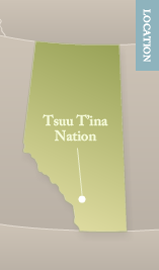
Bridging the Language Gap with Technology
At the Knowing Our Spirits Conference 2009, Kendall Jacobs, language instructor at the Tsuu T’ina Junior Senior High School, shares his experiences with students using hand signals called total physical response (TPR), images, pictographs, an interactive white board and an animation project.
Select a resource type from the list.
Web Links
While some First Nations, Métis and Inuit experts have recommended these web links, they are not authorized by Alberta Education.
Aboriginal Languages in Canada: Emerging Trends and Perspectives on Second Language Acquisition. Statistics Canada
For many Indigenous people, their language is essential to their identity. In Canada there are more than 50 distinct Indigenous languages belonging to 11 languages families. Many Indigenous languages are disappearing, but this trend is being offset to some degree by the teaching and learning of Indigenous languages through First Nations, Métis and Inuit language and culture programs.
Aboriginal Language and Culture Resources. Alberta Education
This website provides links to First Nations, Métis and Inuit language and culture resources, including annotated bibliographies, policy frameworks, teachers’ guides and resources for Blackfoot and Cree language and culture programs.
Documents
While some First Nations, Métis and Inuit experts have recommended these documents, they are not authorized by Alberta Education.
Aboriginal Place Names. Aboriginal Perspectives Teacher Resource
Investigating the origin of place names reveals the contributions of First Nations, Métis and Inuit to contemporary Canada. This excerpt from Aboriginal Perspectives Teacher Resource (Aboriginal Studies 10) provides examples of place names in Alberta and other provinces.
Names of Aboriginal Peoples. Aboriginal Perspectives Teacher Resource
Many of the names used to identify Indigenous Peoples have little to do with how they identify themselves. Some older names are acceptable, while others are offensive. This excerpt from Aboriginal Perspectives Teacher Resource (Aboriginal Studies 10) provides appropriate contemporary names and information on alternate names used by First Nations, Métis and Inuit.
Aboriginal Languages. Aboriginal Perspectives Teacher Resource
This excerpt from the Aboriginal Perspectives Teacher Resource (Aboriginal Studies 10) focuses on Blackfoot, Cree, Dene, Inuktitut, Nakoda, Anishinabe, Tsuu T’ina and Michif languages by providing a pronunciation key, sample words, print resources and websites.
Language and Worldview. Aboriginal Perspectives
In an excerpt from Aboriginal Perspectives (Aboriginal Studies 10), English and Indigenous languages are compared to show how many Indigenous languages emphasize the concepts of connection, interdependence, change and transformation.
Select a video from the list.
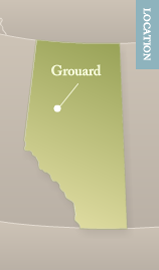
Tipi Teachings
Margaret Cardinal, artisan and instructor at Northern Lakes College in Grouard, discusses her knowledge of tipi making. Incorporating traditional teachings with images and Cree vocabulary, Margaret shares a historical narrative on tipis and Plains Cree culture.
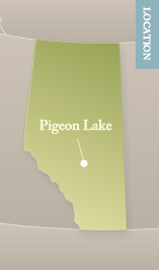
Significance of the Circle
Local Elder Edwin Yellowbird visits a Grade 9 Social Studies class at Pigeon Lake Regional School and shares his personal and Cree perspectives on the concept of circle and its relationship to restorative justice.
Kâpaskwatinâk: a name for many places
Bigstone Cree Elders Nora Yellowknee and Michael Beaver discuss the meaning and location of kâpaskwatinâk with Pauline Auger; with comments from Elders Albert Yellowknee and George D. Auger.
Video recorded at the Kapaskwatinak Cultural Education Centre, located on the Bigstone Cree Nation, November 21, 2012 as part of the research for the Wabasca Community Stewardship Project. Gerald Auger assisted with the video recording.
Bigstone Cree Nation community area names
Bigstone Elders Nora Yellowknee and Michael Beaver describe the names of the different areas of the Bigstone Cree Nation community with Pauline Auger. Elder Michael Beaver provides a brief history of the Jean Baptiste Gambler Indian Reserve, set aside as lands in severalty. Video recorded at the Kapaskwatinak Cultural Education Centre, located on the Bigstone Cree Nation, November 21, 2012 as part of the research for the Wabasca Community Stewardship Project. Gerald Auger assisted with the video recording.
